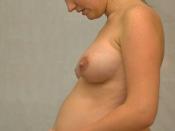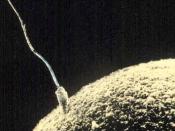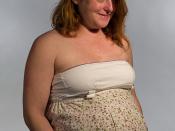Introduction:
For centuries social scientists have been trying to unravel the secrets behind an individual's preference of the same sex. Homosexuality was thought to be a personal choice by some, while others believed it to be influenced by family structure. Only recently though scientists have tried answering this controversial issue from a different point of view. In 1972, Dr. Ingebog Ward studied the sexual behavior of rats and compared it to the sexual behavior of humans. Dr. Ingebog Ward viewed homosexuality from scientific perspective, and the question she hoped to make clear is: "Is homosexuality an aberration, a personal choice, or a natural phenomenon?"
Hypothesis:
If a mother of a child is subjected to a great amount of stress during the first trimester of the pregnancy, then there is a greater chance of the child being born a homosexual.
Collection of Data:
This particular study done on rats was divided into three main parts.
The main subject in this experiment was the pregnant female rats. The control subject was the type and amount of stress the rats would be subjected to, and also the stages of the rats' pregnancies. Dr. Ingebog Ward was the main doctor involved in this experiment.
The first group of pregnant rats were in their first trimester (first ten days of pregnancy, which equals three months of human pregnancies). The mothers were subjected to bright lights, loud noises and annoying vibrations. The second group of rats was subjected to the same stress but close to the end of their pregnancy; the third trimester. The third group of rats had to undergo the same stress as before, but this particular group consisted of both prenatal stressed and unstressed mothers. Their babies were later subjected to the same type of stress, which the first and second groups were...



Science Fair
this seems to have been copied and pasted from a science fair project.
i would not consider this an essay
although it does offer some good data.
1 out of 1 people found this comment useful.